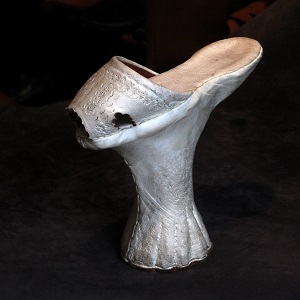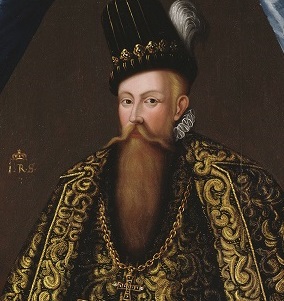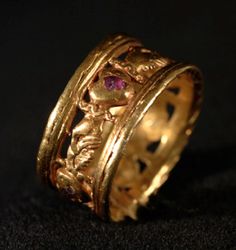"C. Jagiellon played a significant role in the development of our country", stated the Swedish ambassador

Interview by Ilona Skujaitė
Catherine Jagiellon's marriage to Swedish Prince Johan Vasa united the histories of the Grand Duchy of Lithuania, Poland, Finland, and Sweden in the 16th century. Their son, Sigismund Vasa, and his descendants ruled the Polish-Lithuanian Commonwealth for about 80 years. Swedish historians often refer to the reign of Johan III Vasa and Catherine Jagiellon as the "Vasa Renaissance," and numerous castles, jewelry, and other artifacts associated with the couple can be found in modern-day Sweden.
This year Sweden is commemorating the 500th anniversary of the reign of King Gustav Vasa, the founder of the Vasa dynasty and Catherine Jagiellon's father-in-law. Why is this figure so important to Sweden?
It can be said that modern Sweden began with King Gustav Vasa. Elected King of Sweden 500 years ago, he is often called the "father of the nation" in our country, although he was officially crowned slightly later due to certain political circumstances. During his reign, King Gustav established hereditary monarchy, thus securing the right to the throne for his sons, broke ties with the Pope, and turned Sweden into a Protestant state. He managed to unite Sweden and turn it into a powerful country that no one could conquer later, although Denmark had previously ruled Sweden and later made several attempts to reassert its dominance through military means. The Vasa dynasty ruled Sweden until 1654, when Gustav Vasa's great-granddaughter, Queen Christina of Sweden, voluntarily abdicated. The Vasa era in the Polish-Lithuanian Commonwealth lasted a little longer and ended with the reign of John Casimir Vasa, the grandson of Catherine Jagiellon and John III.

Catherine Jagiellon, her husband Johan Vasa and their son, the future Grand Duke of Lithuania and King of Poland, Sigismund Vasa, at Gripsholm Castle.
How do Swedes remember their Queen Catherine Jagiellon?
She played a significant role in the development of our country because Catherine Jagiellon was the sister of Sigismund the Old, King of Poland and Grand Duke of Lithuania. Her mother, Bona Sforza, came from a noble Italian family, so her lineage, family, and connections were significant for Sweden and its future development.
Of course, if you asked Swedes on the street today if they remember her, probably not everyone would know the name Catherine Jagiellon. It should be borne in mind that queens were often overshadowed by men and major political events, perhaps with the exception of the aforementioned Queen Christina, who is very well known in Sweden.
However, people interested in history, architecture, and cultural heritage have no doubt that Catherine Jagiellon played an important role in our country. It is worth remembering that when she came to live in Sweden, she also brought a large entourage, which included many people from Poland, Lithuania, and other European countries. These were specialists in various fields, such as architects, musicians, and cooks. During Catherine Jellon's lifetime, Renaissance culture and architecture flourished in Sweden, and she actively contributed to its development. The Swedish king, Johan III Vasa, built a palace for his wife called Drottningholm, where the current Swedish royal family resides.
Catherine Jagiellon influenced her husband, especially during her four years of imprisonment at Gripsholm Castle. Johan III Vasa was certainly interested in the ideas and knowledge she offered. I think their age difference also mattered: King Johan III was young, ambitious, and probably realized that he could rely not only on Catherine's contacts but also on her opinion, experience, and intellect. Catherine Jagiellon was highly educated, coming from a royal family, and valued Renaissance culture, just like her mother from Italy.
It should also be borne in mind that at the time when Catherine was Queen of Sweden, Krakow was a much larger center of power and influence in Europe than Stockholm. Incidentally, the fact that Queen Catherine was Catholic – she brought Catholic priests to Sweden and raised her children according to her faith – was not viewed very favorably in Protestant Sweden. This was a certain threat of falling back under the influence of the Pope, and later, the Swedish estates partially refused to have Catherine's son Sigismund Vasa, who was raised as a Catholic, as their king.

Drotningholm Palace in Sweden, where the Swedish royal family currently resides, was built by Johan III Vasa for his wife, Queen Catherine Jagiellon. Photo by Gerda Butkuvienė.
Can we call Catherine Jagiellon an inspiring leader in modern terms?
To be honest, it's difficult to say for sure what Catherine Jagiellon was like, as the testimonies we read only give us other people's opinions of her. From what I've read, it seems she must have been very patient, kind-hearted, gentle and noble. For example, when there was a struggle for the throne between the Vasa brothers (Catherine Jagiellon's husband, Johan III, and his brother, King Eric XIV of Sweden), Queen Catherine helped Eric XIV's imprisoned wife, Karin, recover her jewelry and some of her other property. It seems that Catherine Jagiellon was a kind-hearted person.
On the other hand, I'm not sure if she could be called a leader, as Catherine Jagiellon did not have the opportunity to rule the country at that time. However, there is one telling fact: her husband, King Johan III of Sweden, signed a document stating that if he died first and their son Sigismund had not yet reached adulthood, Catherine Jagiellon was to become regent and rule the country. This shows that the king had great faith in his wife and saw that she had the ability to rule. In this sense, Catherine Jagiellon probably had leadership qualities, but there was simply no opportunity to use them, as the king ruled the country.
Moreover, from the sources I've read, I don't get the impression that she was very eager for power. Perhaps this was because Queen Catherine was a Catholic and religion played an important role in her life. Before her imprisonment in Gripsholm, King Eric XIV of Sweden offered Catherine the opportunity to remain free, but she declared that she would remain faithful to her marital vow. This gives me the impression that her desire to be a good Catholic was not just an expression of faith but also a way of life that encouraged her to be content with her position and not desire more than she was given.
Catherine Jagiellon and Johan Vasa were married on October 4, 1562, in Vilnius, at a time when the Livonian War was raging along the shores of the Baltic Sea, and Grand Prince Ivan IV of Moscow, better known as Tsar Ivan the Terrible, had already occupied part of present-day Estonia and Latvia (16th century - Livonia). Was this marriage a kind of alliance against Moscow?
The then King of Sweden, Eric XIV Vasa, did not approve of the marriage of Catherine and his brother John. He was even very angry when he found out about it, because at that time Eric was just trying to reach an agreement with Russia so that he could personally hold off Denmark, which had attacked Sweden and posed a much greater threat. I think that Sigismund Augustus, king of Poland and Grand Duke of Lithuania, could not have known at that time whether Johan had permission from the King of Sweden to marry. By marrying Catherine, Johan was more representing his own personal interests, as at that time he was only a Swedish prince and Duke of Finland.
Of course, relations with Moscow and especially with Tsar Ivan the Terrible were a very important aspect for this couple, later developing into a whole saga in Sweden when the tsar wanted to take Catherine Jagiellon for himself and even sent an official Russian delegation to Stockholm to take her. I am sure that his desire to take another man's wife for himself was an exceptional event for Swedish society at the time.
500 years have passed since the beginning of the Vasa rule. How do Swedes today remember the members of the Vasa dynasty?
King Gustav is very important as the founder of the Vasa dynasty, although Sweden was not yet among the most powerful states during his reign. Nevertheless, the foundations he laid were very important for the further development of the Swedish state, which, under the rule of his grandson King Gustav II Adolf in the 17th century, became one of the greatest powers in Europe.
In Sweden, people are no less fascinated by King Gustav's personality than by his state merits. For example, while organizing an uprising against the Danes in Sweden, Gustav organized a ski expedition across several provinces, recruiting peasants for his army. He managed to secure support for himself and liberate the Swedes from Danish oppression, and in his honor, the "Vasaloppet" ski race is still held annually in Sweden, with thousands of people participating. The Vasa era is still remembered today by the crispy Swedish vasa bread, the ship "Vasa" raised from the seabed, the large real estate company "Vasakronan", and many districts in Stockholm and other Swedish cities are named after it, and there is also a city called Vasa in Finland.
 |  |
The surviving jewelry of Queen Catherine Jagiellon is on display at her burial site in Uppsala Cathedral. Photo by Gerda Butkuvienė.
With the current threat posed by Russia, the countries around the Baltic Sea are actively joining an alliance - Finland and Sweden have become NATO members. Do you see any parallels between today and the Livonian War with Moscow that took place in our region 500 years ago?
When talking about Russia, it must be remembered that it was not always an enemy of Sweden, although there were sometimes very fierce wars with it. In the 16th and 17th centuries, there were especially many battles with Moscow, but the political situation at that time was much more complicated. Sweden fought with other countries for influence in Europe, there was the so-called Thirty Years' War, alliances were constantly formed and then broken, depending on the specific political circumstances.
The seriousness of the current situation is forcing us to join NATO, as it is obvious that Russia is implementing its imperial ambitions through concrete actions. Many European countries, which also had similar ambitions in the past, have long since abandoned them, while Russia continues to promote them, so there are certainly some historical parallels.
Posted on 2023-06-19










